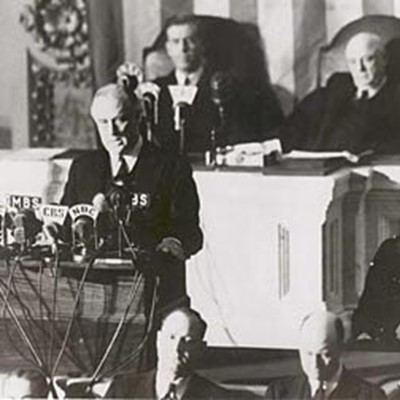
A variety of speaking styles!
More expertise on the topic!
People to share the burden of creating the message and engaging the audience!
Taking a team approach promises all sorts of benefits to the audience and to you, the presenter.
Yet, too often we see teams struggle to do collectively what each member of the group might otherwise do well on their own.
Turns out a lot goes into making a group presentation successful. The work isn't always distributed equally--nor should it be in many cases.
But there are things every team member (including you) should be prepared to do.
After decades of helping teams get it together, here are three tips we know will make a difference.

Collaborate and coordinate in advance
If this seems obvious to you, hooray!
We frequently see, however, that people divide up the presentation then do little else before they combine their slides into a single deck and start bumbling through their presentation in front of an audience.
By collaborate and coordinate, we mean:
- Determine the best order of material and make sure two people aren't covering the same thing.
- Share your scripts, notes, or outlines--so that you can work together to fine tune the material.
- Create a unified look for your presentation if you're using PowerPoint--rather than shoving slides together at the last minute from multiple creators that have different styles.
- Brainstorm questions and objections together and determine how to handle them.
- Rehearse as a team--in the location where the presentation will be made, if possible.
Of course, the time you invest in this will vary, depending on the importance and complexity of the presentation. But even a little advance coordination of content goes a long way toward making a better impression--and one walk-through of the delivery as a team can help you iron out the worst problems.

Minimize the handoff
Even when teams prepare and rehearse, we still see some fall into a pit that goes something like this:
Sally (wrapping up): And that concludes my part of the presentation on production. Thank you for your attention. Now, I'll hand it off to Jim, who'll tell you how we're going to approach marketing.
Jim (opening his section): Thanks Sally for that great presentation on production and thank you everyone for being here. Like Sally said, I'm Jim and I'll tell you how we're going to approach marketing.
Awkward. And boring.
Then imagine that pattern repeating as the next three speakers come forward. Or show yourself some mercy and don't.
Your group presentation will seem better coordinated, more professional, and less plodding if you make the least of these types of transitions. Instead:
- Have a strong open and a strong conclusion for your portion that supports the overall message.
- Decide how introductions will be handled--and stick to the plan. If the preceding speaker introduces you, try to jump into your message with your strong open, skipping all the "thanks Sally" filler.
- Strive to have transitions that are driven by the content and connecting your ideas, rather than making them people focused.
- That said, it's okay to highlight your expertise in the open to your section (or have the preceding speaker highlight it as they close their section and transition to you) if that's relevant and important.
- Be ready to step up and begin your section with plenty of energy and minimal fumbling around. That might mean standing nearby as the speaker before your wraps up, so the audience doesn't have to wait for you to weave your way forward.

Pay attention when you're not speaking
Or at least fake that you're listening to your team members. Because from the moment your group presentation starts, every member of your team is "on."
Your audience will be watching ALL of you. If you look bored, roll your eyes at something another member of the group says, or check your phone while someone else is presenting, they will see YOU--and draw conclusions from that.
When a team member is presenting:
- Direct the majority of your attention toward them. That means you should be looking at them and watching them present as if it is fascinating to you.
- You may occasionally look out at the audience to see how they're responding. Then your attention should go back to the speaker.
- Your face should have expressions that reflect your interest in the message--and your support. This is a time to embrace a principle from improv comedy: Make your partner look good and feel smart.
Another advantage to listening closely to your team members is that you can relate back to something they've said or add a bit of information they've inadvertently left out--another way to make your whole team look good.
More presentation tips
If your team is using PowerPoint, these guidelines can help.
Think your team might face some tough questions? Here's how to think about preparing.
Could jargon be a problem? Here's how to spot it and minimize it.






